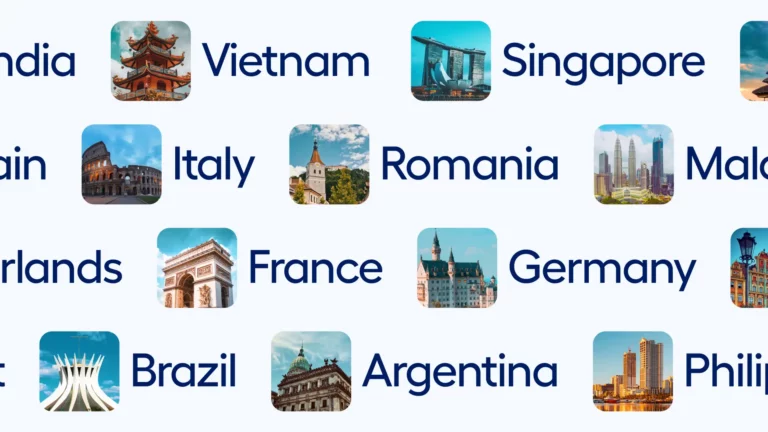People development, employee development, staff development. Whatever you call it, there’s no doubt this process is a vital responsibility for modern HR departments. Not only can employee development strategies improve worker efficiency and the quality of their work, but they also offer pathways for development-hungry workers to grow within a position, ultimately helping to keep them in their roles.
But as the ways in which we work have changed in recent years, so must employee development strategies, in order to ensure workers have the skills necessary to flourish amid phenomena such as remote working and new technologies such as generative AI.
In this article, we’ll explore the role of people development in the modern workplace and the skills businesses need to cultivate in workers to help them succeed in modern, international teams with diverse perspectives and experiences.
What are people development strategies?
First, however, let’s understand what people development entails. It’s a fairly broad category, encompassing everything from:
- Onboarding
- Taught and self-directed courses
- Workshops and conferences
- Mentoring
- Job shadowing
While the specific mix of staff development strategies must be tailored to a business and its individual employees, each approach has the same intent: to help employees grow and thrive.
Of course, it’s not a purely selfless activity. LinkedIn’s latest workplace learning report revealed that 93% of organizations are concerned about employee retention—and that the foremost way they work to improve retention is by “providing learning opportunities.”
There’s no reason that people development has to be a purely internal activity, either. For instance, tech giant Google has recently begun offering free AI training courses in the UK via virtual sessions—either to future-proof individuals for the AI revolution or to lock them into Google’s AI ecosystem, depending on your level of cynicism.
Do I really need to invest in people development?
Still wondering whether employee development strategies are worth spending money on? In that case, it’s essential to realize that people development isn’t just nice to have—it’s existential for employers and employees alike.
That’s partly due to the ongoing talent crunch. A recent report found that more than 85 million jobs could go unfilled in the coming years because people don’t possess the necessary skills to take them, leaving businesses understaffed and workers unemployed. And it’s not just employment figures that are threatened—such a scenario would leave a financial hole to the tune of $8.5tn by 2030.
Scary, right? If the world is to avoid this looming disaster, businesses need to plan ahead. Upskilling and reskilling workers is a critical component of that effort, but the question is: what skills should businesses focus on teaching their employees?
What staff development strategies should I focus on?
The answer to that question depends on the working environment of the company in question. Increasingly, however, those working environments are converging on one location: a distributed workforce. For example, a survey in the UK found that over 40% of respondents reported that their companies had shifted to a hybrid model since the global pandemic, and that’s a trend that’s being repeated worldwide.
It’s tempting to think, and often assumed, that the skills needed by modern-day workers are purely technological, such as programming or data interpretation. And while such skills are essential, they don’t represent the whole story. Soft skills are an underappreciated segment among the other types of employee development.
Indeed, a recent report from AND Digital found that £240bn a year is at risk if businesses focus purely on so-called “hard” skills. So what are the other skills that businesses need to cultivate in a thriving, distributed workforce? Let’s look at a few now.
Five people development skills for a distributed workforce
Digital professionalism
Remote, online interactions require unique standards of etiquette if they are to be successful. That’s why businesses should provide workers with information on how to best communicate within digital environments, from emails to chats and video calls. Virtual interactions can lead to a similarly positive team atmosphere as their real-world counterparts, so long as companies set expectations around punctuality and webcams being turned on.
Constructive communication
Giving and receiving feedback in a distributed team is different from a physical office. Without the instant visual feedback of a face-to-face conversation, it’s far easier to misinterpret each other’s words. Businesses should therefore train employees to deliver feedback constructively and positively receive criticism.
Adaptability
A distributed workforce faces a constantly evolving set of challenges stemming from time zone differences, varying work cultures, and even potential language barriers. Therefore, businesses must foster adaptability and flexibility in their workforce by encouraging time management and self-discipline to help individuals adapt to changing circumstances.
Digital Networking
Without real-world “water-cooler” moments, nurturing team cohesion is vital—whether managing teams or working alongside remote colleagues. Teaching colleagues to over-communicate in virtual channels will make it easier for them to build professional relationships and networks within the organization.
Proficiency with virtual collaboration tools
As hybrid workplaces have become increasingly common, familiarity with virtual collaboration tools is now an essential skill for employees. If distributed teams are to work closely together, there needs to be a high level of proficiency in video conferencing, project management and document-sharing platforms.
People development and beyond with Multiplier
People development is just one of the many challenges of operating a global, distributed workforce. From paying the necessary taxes across varying jurisdictions to procuring the correct forms to employ workers legally, the process can be a nightmare if not done properly.
The Multiplier platform was built to enable businesses to employ global workers effortlessly, serving as an employer of record to make handling global payroll, taxes, social contributions and local insurance policies trivial. So if you want to hire a global team worthy of employee development investment, talk to our experts today!







